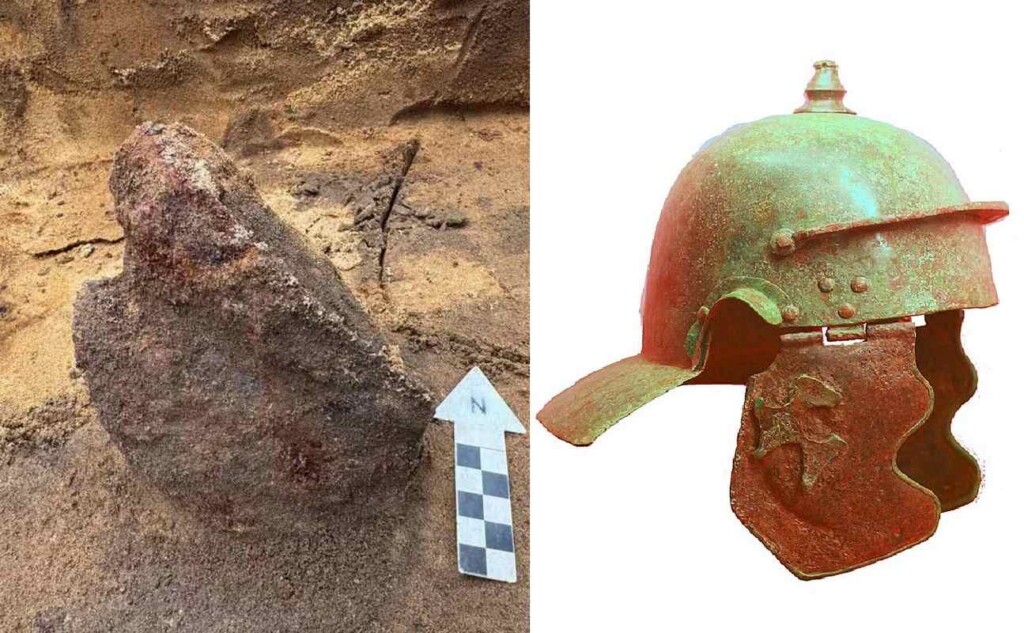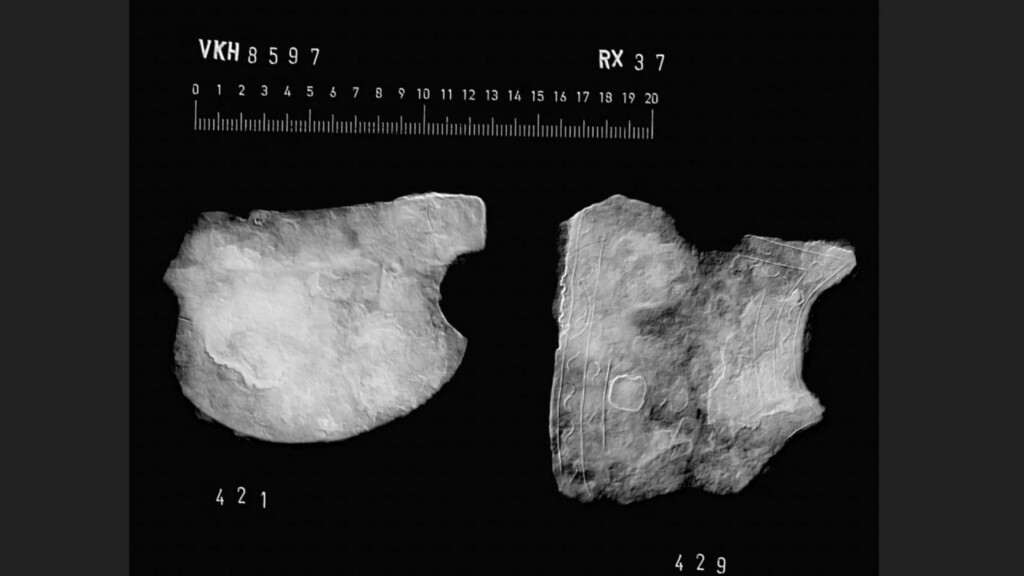Archaeologists Unearth ‘Exceptionally Rare’ Roman Helmet at the Site of ‘Weapon Sacrifice’

When it comes to archaeological discoveries, few things excite as much as a soldier’s helmet. The epitome of looking into the face of the past, they’ve helped historians infer so much about ancient and medieval warfare.
Recently in Denmark, archaeologists became elated when looking through an Iron Age excavation they identified the first Roman Imperial helmet ever found in the country, and just the second in all of Scandinavia.
It was found at Løsning Søndermark, a Danish Iron Age settlement that yielded dozens of artifact weapons which GNN reported on in December 2024. Archaeologists described the find as a “weapons sacrifice,” a strange yet well-documented custom that’s believed to have taken place after battles or the death of an important individual.
The haul included 119 lance and spearheads, 8 swords, 5 knives, 3 arrowheads, an axe head, and a chainmail cuirass—an object of immense value at the time, which would have taken months to craft. Non-military equipment included two oath rings, a bugle of sorts, a horse bridle, and hundreds of flint and pottery fragments.
Also found at the time were “numerous not yet identified iron and bronze objects” some of which must have been the component parts of this ‘Imperial Italic’ class Roman helmet, dating to the twilight of the empire when helmet construction reached an artistic and functional highpoint.
Euro News, reporting on the additional finds, noted that X-ray images on plates of iron revealed them to be parts of the helmet that would have folded down over the cheeks and neck—one of the only points where an enemy could strike to significantly wound a legionary stationed within his battle formation.
Denmark was beyond the borders of the Roman Empire even at its highest point of influence. Rather than belonging to a legionary, the helmet may have been taken as plunder or through trading by Germanic peoples.

The Romans maintained a sort of ‘trade and invade’ policy with the Germans, but never ventured beyond into regions like Scandinavia, the Baltics, or Poland. The Germans however would have been in contact with the inhabitants of these lands, which perhaps is how the helmet ended up so far from the workshops of the Empire.
MORE ROMAN-AGE FINDS: Dozens of Strange 12-Sided Objects from Roman Times Have Been Found—No One Knows What They’re For
The weapons were found in the remains of two separate buildings in Løsning Søndermark, in the municipality of Hedensted, and were often bent in dramatic angles.
In one, the deposits were made during the dismantling of the house. The large, roof-bearing posts were removed, and the weapons were buried in the empty hole. In the second, the offerings were made during the construction of the house, with the weapons and other equipment being tightly packed around the roof-bearing posts prior to backfilling.
WARTIME ARCHAEOLOGY: Finding Any Sword is a Treasure But Four is ‘A Dream’ – We Rubbed Our Eyes
This gave the archaeologists the assurance that the building wasn’t a barracks or smithy, where one may expect to find piles of weapons, and that they were all set together for ceremonial purposes.
Efforts are underway to display parts of the massive find at the Vejle Cultural Museum in early 2025.
SHARE This Continually Unfolding Discovery Of Iron War Gear In Denmark…
>read more at © GoodNews
Views: 0